Looking to the future
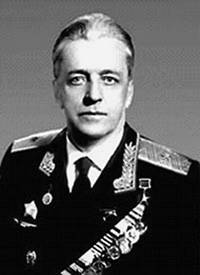 In the first year of the twentieth century, the provincial town of Efremov, which nestles between white birch groves and green oak forests of the Tula province, was agitated by a truly Shakespearean plot unfolding right before the eyes of astonished citizens: Mikhail Myasishchev, the only heir who received the rest of the Lefty Efremov mercenaries who had found the rest of the rest of the rest of the Leftower who had received the rest of the rest of the Efremov mercenaries who had received the rest of the rest of the Efremov mercenaries who had received the rest of the rest of the Efremov mercenaries who had received the rest of the rest of the Efremov mercenaries who had received the rest of the rest of the Efremov mercenaries who had received the rest of the rest of the Efremov mercenaries who had received the rest of the rest of the Efremov mercenaries. Paris, without a memory, fell in love with Yanina Dudkevich, the eldest daughter of a foreign-born Polish nobleman who was expelled from her native lands after the suppression of the 1863 uprising of the year.
In the first year of the twentieth century, the provincial town of Efremov, which nestles between white birch groves and green oak forests of the Tula province, was agitated by a truly Shakespearean plot unfolding right before the eyes of astonished citizens: Mikhail Myasishchev, the only heir who received the rest of the Lefty Efremov mercenaries who had found the rest of the rest of the rest of the Leftower who had received the rest of the rest of the Efremov mercenaries who had received the rest of the rest of the Efremov mercenaries who had received the rest of the rest of the Efremov mercenaries who had received the rest of the rest of the Efremov mercenaries who had received the rest of the rest of the Efremov mercenaries who had received the rest of the rest of the Efremov mercenaries who had received the rest of the rest of the Efremov mercenaries. Paris, without a memory, fell in love with Yanina Dudkevich, the eldest daughter of a foreign-born Polish nobleman who was expelled from her native lands after the suppression of the 1863 uprising of the year.The Russian merchant prepared the heir of his capital for a more brilliant party, and therefore hated the beautiful Polish girl with all his heart. The poor, but proud nobleman had no less reason to hate everything Russian. It is clear that about any wedding could not speak. And the lovers, without waiting for the blessings of their fathers, fled to Moscow, secretly married along the way, for which they were cursed in their own families.
They returned to their hometown only a year later, when both in that and in the other family the passions had subsided enough. And a few months later, Mikhail and Yanina had their first child. And both grandfathers, who appeared at the same time at the children's home to hold the grandson in their arms, finally forgave the obstinate children.
Such a romantic story preceded the birth of Vladimir Mikhailovich Myasishchev in September 1902, one of the outstanding Soviet aircraft designers, whose thought, in the unanimous opinion of colleagues, was several decades ahead of its time ...
Province boy
In January, 1913, a boy who had received homeschooling before, entered the Efremov real school. Neither the First World War that broke out the next year, nor the two revolutions that dragged the country into the chaos of the Civil War, prevented his studies.
The document on secondary education, Vladimir had a chance to receive already in the Soviet school, in September 1919. And no matter how great was the youth's desire for knowledge, he had to wait a little with higher education: for almost a year he worked first as an accountant in the office “Prodput” and then as a clerk in the city military registration and enlistment office.
The year 1920 became crucial in his fate: in August, having brilliantly passed the entrance exams, the young man became a student of the mechanical faculty of the Moscow Higher Technical School (now - Bauman Moscow State Technical University). “Persistent, purposeful, established, already completed, very strong-willed nature. Modest, collected, smart, serious. Sustained, calm, rather closed. An energetic employee with initiative, a good and conscientious comrade ”- this is how Vladimir Myasishchev, a student of the 2 course, was characterized by the leaders of the trade union and Komsomol organizations. And this characteristic has changed little in subsequent years.
The time at which his student years fell was hungry. His father, who had lost all his stores, manufactories and other businesses capable of generating income after October 1917, was dying in Efremov and needed care. In order to somehow make ends meet, Vladimir Mikhailovich was working as a mathematics teacher in Moscow schools and orphanages. It happened, and the cars were unloaded at railway stations, carrying sacks of flour and sugar on their shoulders.
On senior courses, the provincial greedy for knowledge gained the opportunity to make a living by more skilled labor: in 1924, he received a position as a draftsman in the design bureau of the Scientific-Experimental Airfield of the Air Force.
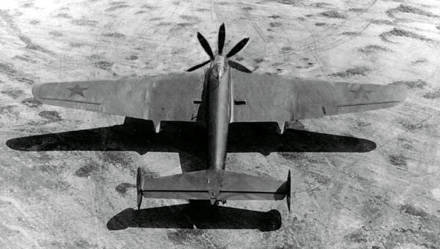
This early introduction to combat aircraft to a large extent determined the choice of the thesis topic of the future aviation engineer: Vladimir Myasishchev decided to defend himself on the all-metal fighter project he had developed. And this at a time when the basis of the country's combat fleet was made up of cars, covered with plywood and covered with a cloth with special impregnation!
Myasishchev’s student’s supervisor was none other than Andrei Nikolaevich Tupolev, who was then head of the AGOS specialized design bureau (aviation, hydroaviation and pilot construction), which existed at the Central Aerohydrodynamic Institute. N.E. Zhukovsky (TsAGI). He immediately drew attention to a young man who showed great promise. And as soon as Vladimir Mikhailovich became a certified engineer, he offered him a place in his SKB.
So, since September 1926, the design activity of Myasishchev began, which later brought him not only the joy of creativity and the happiness of success, but also a lot of disappointments and disappointments ...
The thorny path to the sky
U Tupolev Vladimir Mikhailovich got into the design brigade of V. M. Petlyakov, who was engaged in design work on the creation of the wing of the ANT-4 aircraft, the first-born of the Soviet bomber aircraft, after being launched into serial production designated TB-1.
Soon the young engineer, who proved the ability for independent design and research work, was assigned an even more important area - the development of the fuselage of a new Soviet bomber, which was to consist of thin-walled nickel-chrome pipes, which was a great novelty at that time. The TB-3 aircraft, capable, thanks to the special strength and lightness of the hull designed by Myasishchev, to carry 10 tons of bombs, fully met the expectations of the leadership of the Red Army. And the experience gained during its creation was fully used in the design of the air Maxima Gorky supergiant, for which Myasishchev and Petlyakov created unique wings.
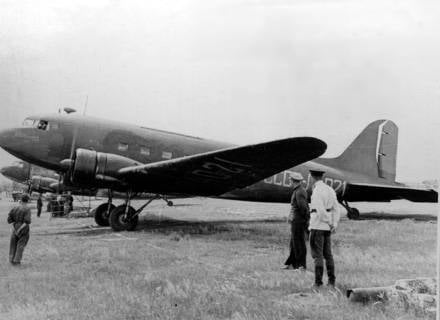
After all these successes, at the beginning of 1934, the design office of Tupolev was separated from TsAGI into an independent organization, where six specialized brigades were created, each of which engaged in the development of its own aircraft. The one that was headed by Vladimir Mikhailovich Myasishchev was to be constructed by the first Soviet torpedo bomber.
The machine, according to the requirement of the customer - the Air Force Command, had to fly day and night, including in adverse weather conditions, climb to 7000 meters, have a practical flight range of at least 3000 km and reach speeds of up to 340 km / h. These were very high performance, considering that the best at that time Soviet biplane fighter I-15 squeezed something out of its engine near 370 km / h. But this is a fighter. And the plane Myasishchev had at such speeds to carry a torpedo mass in 1700 kg! And to do this, have a bomb bay with a length of 6,5 m (approximately 40% of the length of the fuselage). Not a single winged car in the world had this. How, even without taking into account other design requirements, with such a “hole” to ensure the rigidity and strength of the aircraft body, nobody knew.
In addition to Myasishchev. Already in July, 1935 of the TsAGI plant began to embody its drawings into metal at the plant of experimental designs, and test pilot A.P. Chernavsky 2 of June 1936 threw the T-1 prototype into the sky. The first flight lasted 25 minutes and ended well: the torpedo bomber was easy to pilot, had good stability and controllability. Began planned work on fine-tuning the aircraft.
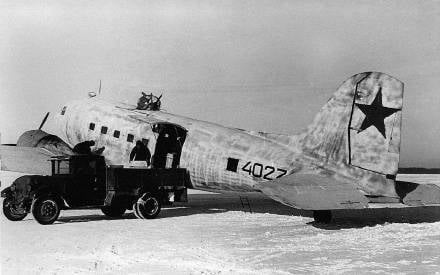
On July 3, the crew set off for another test flight, having the task of measuring the maximum speed and, after performing a dive, test the aircraft at a speed exceeding the maximum calculated speed by 15%. But seven minutes after takeoff, when Chernavsky at 2900 meters climbed 260 km / h, the car began to shake violently. The pilot threw off the gas and tried to translate the plane into a climb, in order to reduce speed as quickly as possible. However, a strong vibration literally tore the wheel from his hands. Realizing that the torpedo bomber got out of submission, the crew left the car. And in time: after seconds, the right wing began to fold up, and the T-1 collapsed into the woods near the Khimki railway station ...
Although Vladimir Mikhailovich and his team did everything in their power to eliminate the flaws in the design of the aircraft and bring it to serial construction, it did not go to the T-1 conveyor. Now it is difficult to answer why it happened. Probably, at this time, the leadership of the Air Force had already relied on the torpedo version of the long-range twin-engined bomber DB-3 (Il-4), which had just successfully passed state tests. There are no direct documents that shed light on this circumstance. But the fact remains that the first specially created torpedo-carrying aircraft in the USSR, which embodied a number of advanced technical solutions, had obvious prospects in terms of combat use and had no analogues, was never built.
Myasishchev, however, was recalled a bit later with T-1 ...
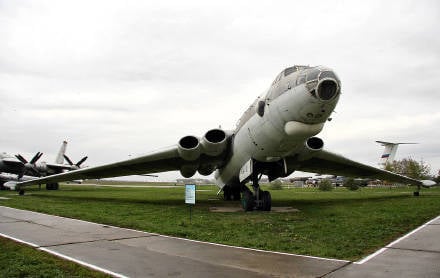
In 1936, Soviet aviation faced the urgent need to adopt a modern military transport aircraft. And since in our country there was practically no development on this subject, a group of aircraft designers led by Tupolev was delegated to America to learn about the overseas experience. It included Myasishchev. In addition to professional merit, he had another indisputable advantage over many Soviet aviation engineers of those years - he spoke fluently in three European languages: English, French and Polish, which he learned in his parents' house since childhood.
In the United States, Tupolev drew attention to the DS-3 passenger aircraft, which was excellent in flight performance and offered to acquire a license for its production. Negotiations with the company "Douglas" were successful, and soon all the technical documentation was in Moscow. It should be translated into Russian, recalculated all sizes from inches to centimeters, re-calculate the resistance of materials taking into account those produced by the Soviet industry, on the basis of the data obtained to produce and reproduce the new drawings. And all this had to be done as soon as possible.
For these purposes, at the beginning of April 1937, the design team of Myasishchev was transformed into a specialized design bureau. It was located at the plant number 84 in Tushino, dedicated to the development of the new aircraft. By the middle of summer, the first model, in fact, a new military transport aircraft, designated PS-84, was collected and raised to the sky. From next year, the car went into mass production ...
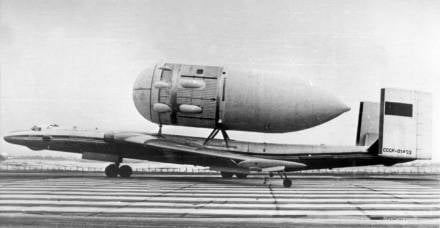
True, in the history of aviation and World War II, it remained as Lee-2, so named in 1940 by the name of the chief engineer of the Tushino aircraft factory B. P. Lisunov. Since her “second father” Vladimir Mikhailovich Myasishchev (if the first to consider the aircraft designer of the Douglas company Arthur Raymond) was already arrested by that time ...
From prison to general
He and his colleagues in the Tupolev design bureau were taken at the beginning of the thirty-eighth. There were plenty of reasons for the arrest of Myasishchev at the “competent authorities”: the birth in a merchant-noble family, and the father’s long stay in Paris, and the designer’s own visit to America, and, of course, “sabotage” when creating the T-1 torpedo bomber.
Vladimir Mikhailovich, in the Special Technical Bureau of the TsKB-29 NKVD of the USSR, now better known as Sharashka, located in Moscow on Radio Street, got into the department of V. M. Petlyakov, who was developing the new diving bomber, and headed the design team of the wing.
But in the brain of Myasishchev, a new aircraft was already being born, an unprecedented high-altitude high-speed long-range bomber. The machine, according to the designer, was supposed to have two airtight cabs, three-wheeled chassis, remotely controlled on-board armament, and most importantly airtight wings that can be used as fuel tanks, which will significantly increase the flight range. Nothing like this in the world aviation has yet been!
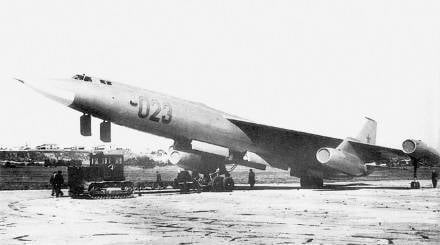
Having thoroughly thought over the project, Vladimir Mikhailovich expressed his thoughts on paper and presented it to the management of the Central Design Bureau. They got interested in the idea. For Myasishchev in the states, the same “sharashka” was organized by a special design department and allowed to engage in a promising bomber, designated as DVB-102.
When the Great Patriotic War began, the department of Myasishchev was evacuated to Omsk, where the designer continued his work at a local aircraft factory located on the left bank of the Irtysh in the village of Kulomzeno. At the beginning of 1942, a prototype of the first Soviet high-altitude bomber rose into the sky. He developed the speed of 565 km / h, was able to fly freely at an altitude of 11500 m, inaccessible to the fighters of those years, and reach targets that were distant 2230 kilometers.
As soon as the results of the first tests were reported to Moscow, a telegram signed by Stalin came to Myasishchev: the leader personally thanked the designer for creating a unique aircraft. It meant freedom — both personal and creative. It seemed that Vladimir Mikhailovich waited pores for the realization of his wildest ideas. But fate decreed otherwise.
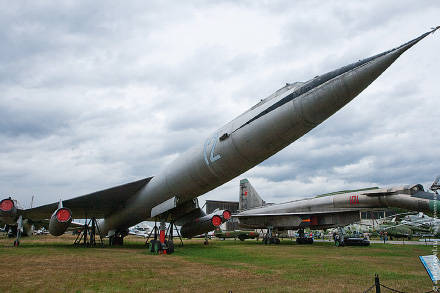
12 January 1942 killed a longtime colleague and senior fellow Myasishchev aircraft designer Petlyakov in a plane crash. After this, the Kazan factory, which produced Pe-2, went from bad to worse: the quality of the produced bomber dropped sharply, the speed of the "pawns" fell much lower than the design, they became more and more easy prey for German fighters. As a result, a formidable resolution of the State Defense Committee was issued, ordering, as soon as possible, to restore the aircraft’s calculated characteristics. Yesterday's prisoner Myasishchev was appointed responsible for this. And at the beginning of 1943, Vladimir Mikhailovich, together with his design bureau, moved to Kazan.
A pilot model DVB-102 for a long time stood at the factory airfield, serving as a silent reminder of the way in which the Soviet bomber aircraft will develop in the postwar years. It is said that once one of the pilots who flew to Omsk for distilling serial combat aircraft to the front, admired this machine and very precisely called it “sleeping beauty” ...
Working on the restoration of the design characteristics of the Pe-2, Vladimir Mikhailovich simultaneously engaged in a deep modernization of this unique in its capabilities aircraft. As a result, after six months, the Pe-2 I was born, capable of reaching a speed of 5000 km / h at an altitude of 646 meters. Training air battles with Soviet and captured fighters showed that neither the high-speed Yak-3, nor the Messerschmitt-109, nor the Focke-Wulf-190 can intercept and effectively attack this machine, which received, among other weapons, a remote-controlled 12,7-mm machine gun in the tail.
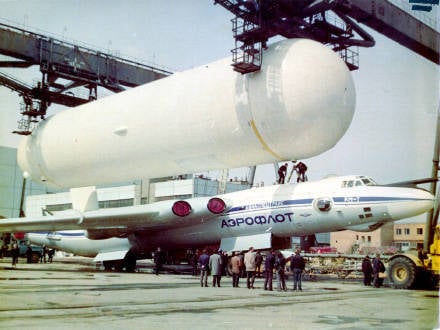
In addition to this unicum, under the leadership of Myasishchev, six more modifications of the Pe-2 were created in Kazan - from a high-altitude fighter to a special airliner. A remarkable fact: already creating the Pe-2 I, Vladimir Mikhailovich could demand renaming the car, since with external similarity it was a fundamentally new model. But he, out of respect for the memory of his friend and mentor V.M. Petlyakov, did not change the name of either this or the subsequent modifications. Truly: a noble man is noble in everything! ..
19 August 1944 Myasishchev was awarded the rank of Major General Engineering and Technical Services. At the same time for outstanding successes in the aircraft industry - the rarest case! - He was awarded the military order of Suvorov 2-th degree, which then had not all the commanders and commanders of the fronts of the advancing army.
The last military year was very fruitful for Vladimir Mikhailovich. At the end of the summer of 1944, he created a prototype DVB-108, which developed speed in 700 km / h. At the same time, he was engaged in designing air giants DVB-202 and DVB-302, capable of taking on board up to 16 tons of bombs. At the same time, an experimental model of a long-range fighter escort DIS went up to the sky. And from under the pencil of the designer, the drawings and drawings of the RB-17 jet bomber designed by him, which is able to cover 3000 kilometers and reach a speed of more than 800 km / h, have already been released.
Myasishchev was well aware that the aircraft he was developing did not have time to take part in the war. But, as befits a genius, he worked with a great eye on the future ...
Ultra long
In October, Vladimir Mikhailovich 1945 was awarded the Order of Lenin. The designer was full of creative plans, he was surrounded by a highly professional team of like-minded people, united by many years of work. Everything was as good as possible. But life again made a sharp turn.
After the war, many design offices engaged in the development of weapons, began to repurpose - the industry was transferred to the peaceful rails. OKB Myasishchev transferred from Kazan to one of the Moscow aviation factories without providing any experimental production base. And in February, 1946 was disbanded altogether: employees were assigned to other aviation designers, and Vladimir Mikhailovich himself was transferred to teaching work at the Moscow Aviation Construction Institute, where he occupied the positions of aircraft construction faculty dean and head of the aircraft design department. Another would live and rejoice in his place. But Myasishchev wanted to build new cars and see them soar into the sky!
Everything changed again overnight, when the leadership of the USSR learned that the Americans had begun to create an intercontinental bomber. Stalin called Tupolev and wondered whether it was possible to create a similar aircraft based on the Tu-16, adding two engines to the car, increasing its dimensions and weight. Andrei Nikolayevich said bluntly that with existing engines it would not give the desired result - the car would not reach America anyway. It is necessary to develop a fundamentally new aircraft. But he, Tupolev, will not undertake this, since, at a given level of development of the Soviet aircraft industry, this task is almost impossible.
You had to be a very brave man to say such a leader ...
And then Stalin remembered Myasishchev. 24 March 1951 was issued by a resolution of the USSR Council of Ministers on the organization of the OKB-23, which was to be headed by Vladimir Mikhailovich. It also stipulated that the new high-speed, ultra-long-range bomber, for the sake of which all of this, in fact, was started, should be ready for flight testing in December of the 1952, and for acceptance by the state commission - by May of 1953.
The deadlines were deadly. This was understood even in the Kremlin. And in order to somehow ease Myasishchev the fulfillment of the government task, he was given unlimited powers to select the necessary personnel and organize the production base. Vladimir Mikhailovich returned all those who worked with him in Kazan. In addition, they were allowed to take to themselves any required number of engineers who graduated from aviation universities in 1951. It is clear that Myasishchev took the best, causing quite understandable grumble in many aircraft-building research institutes and design bureaus.
But all this allowed him to create the ordered bomber in just a year and a half: January 20 1953, the prototype M-4 made its first flight! State tests of the car took place at a specified time. And in the third quarter of 1953, its drawings had already been transferred to the Tushino aircraft factory to start mass production, which began in January of 1955. By this time, the West already knew that the USSR had a strategic bomber: 1 May 1954, during the air parade over Red Square, giant M-4, accompanied by little fighter jets, sailed at extremely low altitude over the heads of astonished Muscovites and foreign military attaches, here same christened him "Bison".
Since the spring of 1955, the M-4, which had developed speed in 950 km / h, capable of carrying up to 24 tons of bombs and having a practical range in 8100 kilometers, began to flow into the air force units. And his creator, meanwhile, continued to work on improving his offspring, solving the main task: how else to increase the range of the bomber?
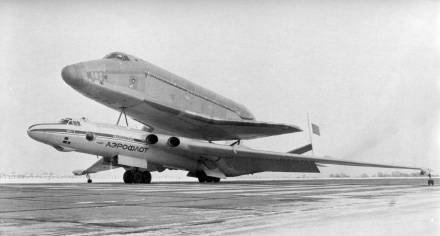
The solution turned out to be simple, as was all ingenious - the car had to be filled in the air, without interrupting the flight!
It remained to figure out how to implement it technically. And Myasishchev OKB switched to the development of the refueling system and its introduction into the aircraft design. At the same time there was a modification of the M-4 under the air tanker.
In March 1956, the air refueling system created under the leadership of Vladimir Mikhailovich successfully passed the flight tests. And 8 February 1957 of the year M-4 made an ultra-long flight with two refueling in the air, covering a distance equal to half the Earth's equator. And this meant that the Soviet bomber aircraft received an almost unlimited range of combat use.
For the creation of an intercontinental bomber, Vladimir M. Myasishchev, General Designer of OKB-23, was awarded the title Hero of Socialist Labor and the Lenin Prize in 1957. The design bureau was awarded the Order of Lenin, many of its employees were awarded orders and medals.
The very same winged machine, produced in two versions (the 3 M bomber and the M4 tanker aircraft), on which the 19 world records of payload, altitude and flight range were set, was in service with the Soviet Air Force for thirty-five years. The last of the "Bison" was put on scrap metal in 1989 year in accordance with the OCB-1 contract.
But his story did not end there. Already after Vladimir Mikhailovich passed away, a unique heavy transport aircraft VM-T Atlant was created on the basis of 3 M at Myasishchev OKB. A total of three cars were built. One was transferred to TsAGI for experimental work, and the other two were used for a long time for transporting large-sized elements of the Energia and Buran rocket-space complexes from the plants to the Baikonur cosmodrome. In total, more than 1980 flights were made on the "Atlants" in the 150s.
Clipped wings
But all this will be later. And then, in the middle of 1950's, Myasishchev, who did not think to rest on his laurels, immediately began designing a bomber capable of climbing into the stratosphere and developing a speed close to the speed of sound. At the tip of his pencil, the M50 was already born - the only Soviet bomber, created not for the existing, but for the air navigation equipment and weapon systems that were still being designed.
In the process of improving "half a dozen" for balancing the design on supersonic Myasishchev developed a special form of the wing, which was then used to create supersonic Tu-144 and Tu-160. In addition, in the process of fine-tuning the aircraft by the designer, for the first time in the history of aviation, the front small, controlled plumage was calculated to improve the takeoff and landing characteristics of the aircraft.
The car was embodied in the metal, passed the preliminary flight tests and was ready to be launched into mass production. But the almost ready M-50, already demonstrated at the air parade in Tushino, did not go into the series. Time again played a cruel joke: the outstanding successes of Soviet designers in rocket production settled in the minds of the country's leaders the idea that strategic bombers were no longer needed.
And in the autumn of 1960, the design bureau of Myasishchev was disbanded, transferring as a branch in the OKB-52 VN Chelomeya, which was engaged in rocket engineering. Vladimir Mikhailovich himself, in order to somehow brighten up his mental anguish, was appointed director of TsAGI.
He did not hide the fact that this appointment, which deprived him of the ability to create. But at the new post he did a lot to improve the work of the scientific center of the domestic aircraft industry. It was under Myasishchev that a unique laboratory was created at the institute for comprehensive verification of advanced aircraft schemes, which Vladimir Mikhailovich personally supervised.
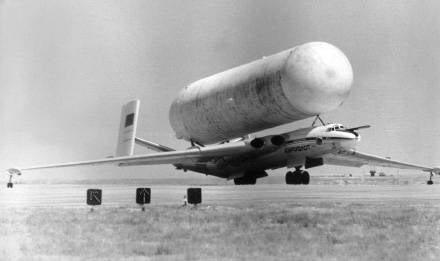
He did not leave design activity. It was during these years under the leadership of Myasishchev that the M-17 developed the Stratosphere, a high-altitude interceptor of reconnaissance balloons that were regularly launched by American intelligence services and flown over considerable distances deep into the territory of the USSR.
For various reasons, the first flight of this aircraft took place only at the beginning of the 1980-x. But now, on the basis of the M-seventeenth, a high-altitude reconnaissance-strike complex has been created, consisting of the actual M-55 reconnaissance aircraft “Geophysics”, produced in Smolensk, and a ground command and control point providing target designation of ground-to-ground and attack missiles. airplanes ...
The years took their toll, and in the second half of the 1970, Vladimir Mikhailovich began to gradually retire, spending more and more time at the cottage outside Moscow. True, the rest of the aircraft designer was very relative: he studied domestic and foreign scientific literature, receiving foreign journals in eight (!) Languages, wrote his own articles, consulted colleagues, worked through them with new ideas in aircraft manufacturing ...
After the attack that happened in the fall of 1978, the heart of this amazing person stopped.
Information